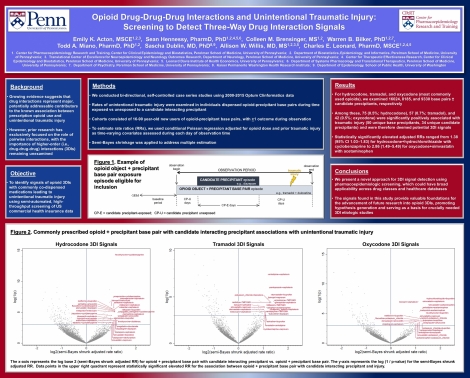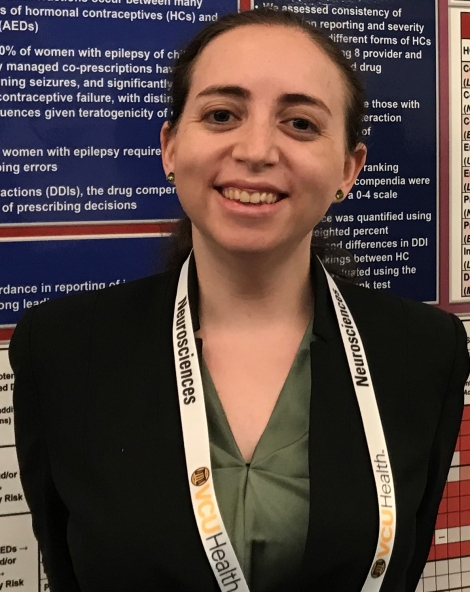Emily Acton
Opioid Drug-Drug-Drug Interactions and Unintentional Traumatic Injury: Screening to Detect Three-Way Drug Interaction Signals
Abstract
Background:
Growing evidence suggests that drug interactions represent major contributors to the known association between opioid use and unintentional traumatic injury. However, prior research has focused on the role of pairwise interactions, with the importance of higher-order (i.e., drug-drug-drug) interactions (3DIs) remaining unexamined.
Objectives:
To identify signals of opioid 3DIs with commonly co-dispensed medications leading to unintentional traumatic injury using semi-automated, high-throughput screening of US commercial health insurance data
Methods:
We conducted bi-directional, self-controlled case series studies using 2000–2015 Optum Clinformatics data. Rates of unintentional traumatic injury were examined in individuals dispensed opioid-precipitant base pairs during time exposed vs unexposed to a candidate interacting precipitant. Underlying cohorts consisted of 16–90 year-old new users of opioid-precipitant base pairs, with >=1 outcome during observation periods. We used conditional Poisson regression to estimate rate ratios adjusted for dynamic confounders, and semi-Bayes shrinkage to address concerns of multiple estimation.
Results:
For hydrocodone, tramadol, and oxycodone (most commonly used opioids), we examined 16024, 8185, and 9330 base pairs ± candidate precipitants, respectively. Among these, 75 (0.5%; hydrocodone), 57 (0.7%; tramadol), and 42 (0.5%; oxycodone) were significantly positively associated with unintentional traumatic injury (50 unique base precipitants, 34 unique candidate precipitants) and were therefore deemed potential 3DI signals.
Conclusions:
We present a novel approach for 3DI signal detection using pharmacoepidemiologic screening, which could have broad applicability across drug classes and databases. The signals found in this study provide valuable foundations for future research into opioid 3DIs, generating hypotheses to motivate crucially needed etiologic studies.
Keywords
Drug Interactions, Injury, Opioid Analgesics, Pharmacoepidemiology, Population Health, Self-Controlled Case SeriesCommenting is now closed.
About Us
To understand health and disease today, we need new thinking and novel science —the kind we create when multiple disciplines work together from the ground up. That is why this department has put forward a bold vision in population-health science: a single academic home for biostatistics, epidemiology and informatics.
© 2023 Trustees of the University of Pennsylvania. All rights reserved.. | Disclaimer



